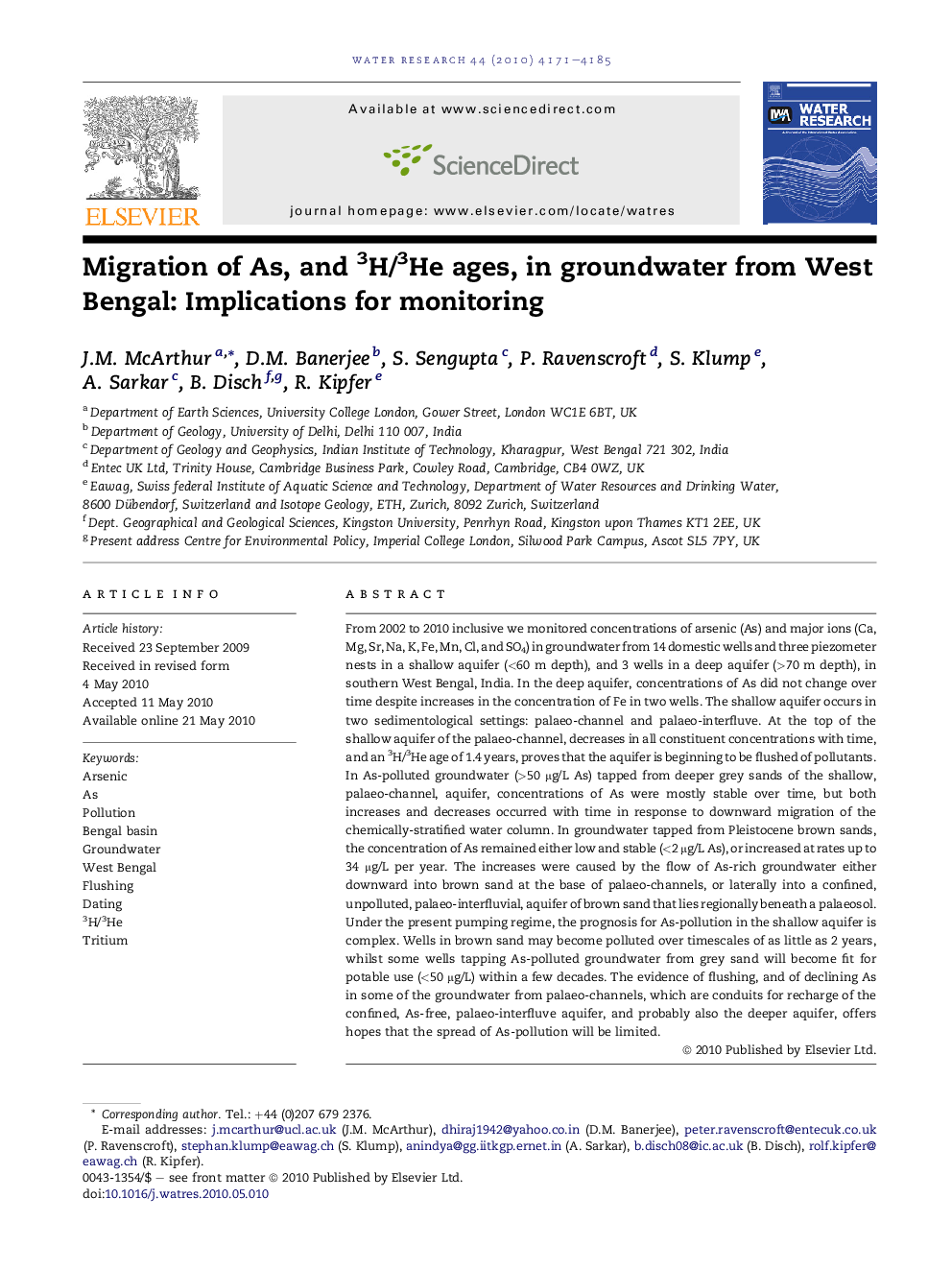| کد مقاله | کد نشریه | سال انتشار | مقاله انگلیسی | نسخه تمام متن |
|---|---|---|---|---|
| 4483658 | 1316895 | 2010 | 15 صفحه PDF | دانلود رایگان |

From 2002 to 2010 inclusive we monitored concentrations of arsenic (As) and major ions (Ca, Mg, Sr, Na, K, Fe, Mn, Cl, and SO4) in groundwater from 14 domestic wells and three piezometer nests in a shallow aquifer (<60 m depth), and 3 wells in a deep aquifer (>70 m depth), in southern West Bengal, India. In the deep aquifer, concentrations of As did not change over time despite increases in the concentration of Fe in two wells. The shallow aquifer occurs in two sedimentological settings: palaeo-channel and palaeo-interfluve. At the top of the shallow aquifer of the palaeo-channel, decreases in all constituent concentrations with time, and an 3H/3He age of 1.4 years, proves that the aquifer is beginning to be flushed of pollutants. In As-polluted groundwater (>50 μg/L As) tapped from deeper grey sands of the shallow, palaeo-channel, aquifer, concentrations of As were mostly stable over time, but both increases and decreases occurred with time in response to downward migration of the chemically-stratified water column. In groundwater tapped from Pleistocene brown sands, the concentration of As remained either low and stable (<2 μg/L As), or increased at rates up to 34 μg/L per year. The increases were caused by the flow of As-rich groundwater either downward into brown sand at the base of palaeo-channels, or laterally into a confined, unpolluted, palaeo-interfluvial, aquifer of brown sand that lies regionally beneath a palaeosol.Under the present pumping regime, the prognosis for As-pollution in the shallow aquifer is complex. Wells in brown sand may become polluted over timescales of as little as 2 years, whilst some wells tapping As-polluted groundwater from grey sand will become fit for potable use (<50 μg/L) within a few decades. The evidence of flushing, and of declining As in some of the groundwater from palaeo-channels, which are conduits for recharge of the confined, As-free, palaeo-interfluve aquifer, and probably also the deeper aquifer, offers hopes that the spread of As-pollution will be limited.
Journal: Water Research - Volume 44, Issue 14, July 2010, Pages 4171–4185